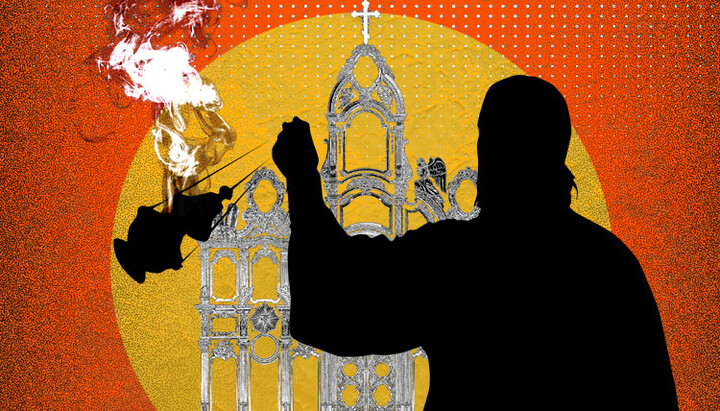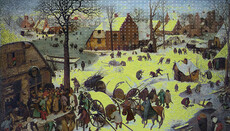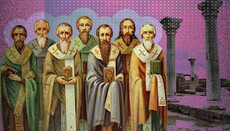Why does the church day begin in the evening?

Let's explore the meaning, history, and order of Vespers – the first service of the daily cycle that begins every feast.
Last time we spoke about divine worship as the heart of Church life and briefly touched upon the daily cycle of services. In addition to it, there are two other liturgical cycles: the weekly one (prayers for each day of the week) and the yearly one (feasts and commemorations of saints).
These cycles converge in every service of the daily round. Today, we begin a closer look at each of them – starting with Vespers, since it is Vespers that begins the Church day.
In this article, we will explore how the rite of Vespers took shape, its overall meaning, and its structure. In the following pieces, we will examine the most profound and expressive moments of the service, those that reveal its inner spiritual depth.
From the “supper of love” to the church service
In the earliest Church, there were no fixed services such as Vespers or Matins. Christians prayed at certain hours of the day (the third, sixth, and ninth) with a short home rule consisting of a few psalms and the Lord’s Prayer.
Vespers arose out of the evening common meal – the agape or “supper of love” – which concluded with the Eucharist.
As the Eucharist was later transferred to the morning, and the agape became a charitable and memorial meal, the former evening gathering gradually took on a distinct liturgical form. It inherited from the ancient assemblies the spirit of expectation and inner preparation for the Eucharist.
That is why Vespers is still understood as a pre-Eucharistic service. The Church begins its liturgical day with it, following the biblical order of creation: “And the evening and the morning were the first day” (Genesis 1:5).
Types of Vespers
The length of Vespers is relatively short – not by accident, since it is celebrated at a time when human strength is already waning.
The Typicon distinguishes several kinds of Vespers:
- Daily Vespers – on weekdays.
- Great Vespers – on the eve of Sundays and feast days (as part of the All-Night Vigil).
- Little Vespers – now rarely served, usually in monasteries before the meal that precedes the Vigil.
Modern Vespers combines features of both the ancient parish “sung office” (the cathedral rite of Constantinople) and the monastic evening rule.
The order of the service
Vespers begins with the usual opening prayers (Trisagion, Our Father, Lord, have mercy – 12 times, O come, let us worship…), followed by Psalm 103, the Great Litany, and a kathisma (a portion of the Psalter).
Then come Psalms 140, 141, 129, and 116 with their hymns “Lord, I have cried.” These are the first variable chants of the service. Depending on the feast, their number may vary: ten, eight, or six.
The next key hymn is the ancient “O Gladsome Light.”
After that is sung the prokeimenon – a short chant built from verses of the Psalms (each day of the week has its own). On feast days, readings from Scripture (paremias) are added.
The main prayers: “Grant, O Lord” and “Now lettest Thou Thy servant depart”
A central prayer of Vespers is “Grant, O Lord, that we may be kept this evening without sin…” It consists of selected biblical verses and has a significance comparable to that of the Great Doxology at Matins. According to the Typicon, it should be read by the celebrant (or, during home prayer, by the head of the household).
After the litany, the stichera on the stichera verses are sung. They are called so because they have no fixed psalm verses; instead, special verses are chosen each time to match the content and feast. For example, the Octoechos stichera correspond to the themes of the days of the week (the weekly cycle), while those from the Menaion tell of the feast being celebrated (the yearly cycle). Thus the various liturgical cycles are joined together.
Then follows “Now lettest Thou Thy servant depart in peace” – the words of thanksgiving spoken by the righteous Simeon the God-Receiver when he met the Christ Child in the temple. According to the Typicon, this prayer is also read by the celebrant, emphasizing its importance.
It serves as a reminder of the meaning of each day – and of human life itself. If a person, like Simeon, has lived the day in Christ and with prayer, that day has been truly meaningful. At the same time, this prayer underscores the character of Vespers as a service imbued with the theme of waiting for the Savior.
At the end of Vespers, the troparia of the day are sung – short hymns highlighting the main meaning of the feast – followed by the Fervent Litany and the closing prayers.
The meaning of Vespers: waiting for the “True Sun”
The Holy Martyr Cyprian of Carthage wrote of the spiritual meaning of Vespers: “We ought to pray at sunset and at the close of the day; for Jesus Christ is the true Sun and the true Day. Therefore, when we pray at the setting of the sun and the end of the day, and ask that light may shine upon us again, we are thereby praying for the coming of Christ, that it may bring us the grace of eternal light.”
After Vespers, according to the Typicon, come the meal and Compline; afterward monks are forbidden to speak: “…it is not fitting for monks to engage in conversation with one another, but to retire to their cells in silence and devote themselves to prayer and reading.”
Such, in general terms, is the structure of Vespers. In the next article, we shall examine its most significant moments in detail – to better understand their meaning and more deeply experience the beauty of this ancient service.











